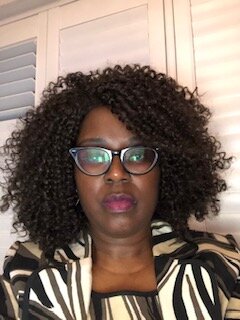Chloe Donovan - Experiences of remote working during the pandemic
My experience of Remote working as a Learning Disability nurse in an Acute General Hospital during the pandemic
This account explores the reflections of my journey as a Lead Nurse for Learning Disability & Autism in a general hospital.
A sensible idea would be to self-deliberate on how I embarked on this journey, as suggested by Gibbs (1998), and reflect on action supported by Reed (2015), who advocates the use of diaries for the exploration of stress and coping.
My Trust was one of the hardest-hit during the first wave of the COVID-19 pandemic. I happened to fall within the high-risk group and needed to shield, having received a letter along with the others being informed, to stay home and clearly stating that if one could not work from home not to work.
The challenge was that although I wanted to work, I could not go into hospital building and the option not to work at all did not resonate with me. This meant I needed to be creative to keep supporting both my colleagues and patients, as well as families and carers, by stepping outside my comfort zone.
I chose to operate a telephone service. This resonates with the importance of experience (Allen, 2015; Christensen, 2011).
Chloe Donovan
"I have no doubt the service developed a national reputation for ‘learning from excellence’ and I am delighted to be part of this."
Visiting restrictions had been enforced as a measure to minimise the potential spread of the virus. To ensure the safe management of patients and helping families to stay in contact with their loved ones during the height of the pandemic, the Trust had just introduced a way of enabling virtual visits. A designated virtual visiting platform (NHS Book) was built in collaboration with the Trust Digital Services and an information technology organisation. This platform facilitates video call visits between patients and their loved ones. Embracing the use of technology which have been designed to allow patients and their relatives to connect during this period, meant I could also be there for my patients when they needed me most.
This helped me to see how they were doing and what reasonable adjustments had been put in place for them. Most of my patients know me as a constant voice and face in the hospital. Speaking to them even if they could not respond I believe made them realise they were not alone. Also, seeing my face via the video offered them some reassurance. Furthermore, the platform enabled a connection to be made to my device using either an email address or mobile phone number. In some cases, we were able to allow family members to join in the call. All this work needs strong collaborative partnerships, and I would like to thank all the staff and particularly the nurses on the wards, for making these visits possible.
There is no doubt that patients must have found this whole situation doubly hard to deal with. Thank goodness the platform facilitated a way for me to continue being a constant presence for patients with a learning disability or autism. As a Trust, we also adapted to using conference calls to continue with our Circle of Support meetings which I chaired from home to make sure the families/carers were updated and involved appropriately.
Seeing colleagues in PPE and looking very tired, was heart-breaking: and I was not simply cheering them on, but also supporting them from a distance. I worked from 08:00 to 17:00 and carried on after dinner to do LeDer rapid reviews, when needed. The consolation was that I did not have to spend time driving, so was able to avoid rush hours, but the change in working methods was still challenging.
As a Trust which services three boroughs, there was need to attend constant LeDer review meetings.
What I was able to do as an Acute Learning Disability Nurse:
flag the need for reasonable adjustments
audit the DNACPRs
facilitate, support, and co-ordinate meeting the healthcare needs of individuals with a Learning Disability, Autism or both;
support clinical teams to best meet the complex needs of individuals.
liaise with the primary care, community learning disability teams, community providers and families in order to ensure a seamless service.
effectively co-ordinate and priorities referrals, arrange support, plan and aid treatment delivery.
evaluate the effectiveness of Coordinate My Care for this group of patients
Glimpse into the Virtual Visiting World:
The ward arranges a virtual appointment on my computer or mobile phone and all that is needed is a device with a webcam and a microphone. The ward then sends two messages, first to remind me of the scheduled date, time and which ward I will be visiting. Second, just before the time, a link will be sent to facilitate the connection. This link can be shared with up to four others to join the same visit, if needed.
The downside is the limited time to allow others to use the device. It is noted that since implementation, 201 devices have been distributed to services across the Trust, facilitating around 8642+ virtual visits and averaging 29.7 visits every day.
The service was awarded UK IT Awards Healthcare Project of the year on 11th November 2020 for a ‘rapidly deployed solution to an immediate and compassionate patient need’. I have no doubt the service developed a national reputation for ‘learning from excellence’ and I am delighted to be part of this.
References:
Allen, D. (2015) The Invisible Work of Nurses: Hospitals, organisation and healthcare. Abingdon: Routledge. Christensen, M. (2011) Advancing nursing practice: redefining the theoretical and practical integration of knowledge, Journal of Clinical Nursing, 20, pp. 873 - 881 Gibbs, G. (1998) Learning by Doing: A guide to teaching and learning methods. Oxford: Oxford Polytechnic Further Education Unit. Reed, S. (2015) Successful Portfolios for Nursing Students, 2nd ed. London: Sage

